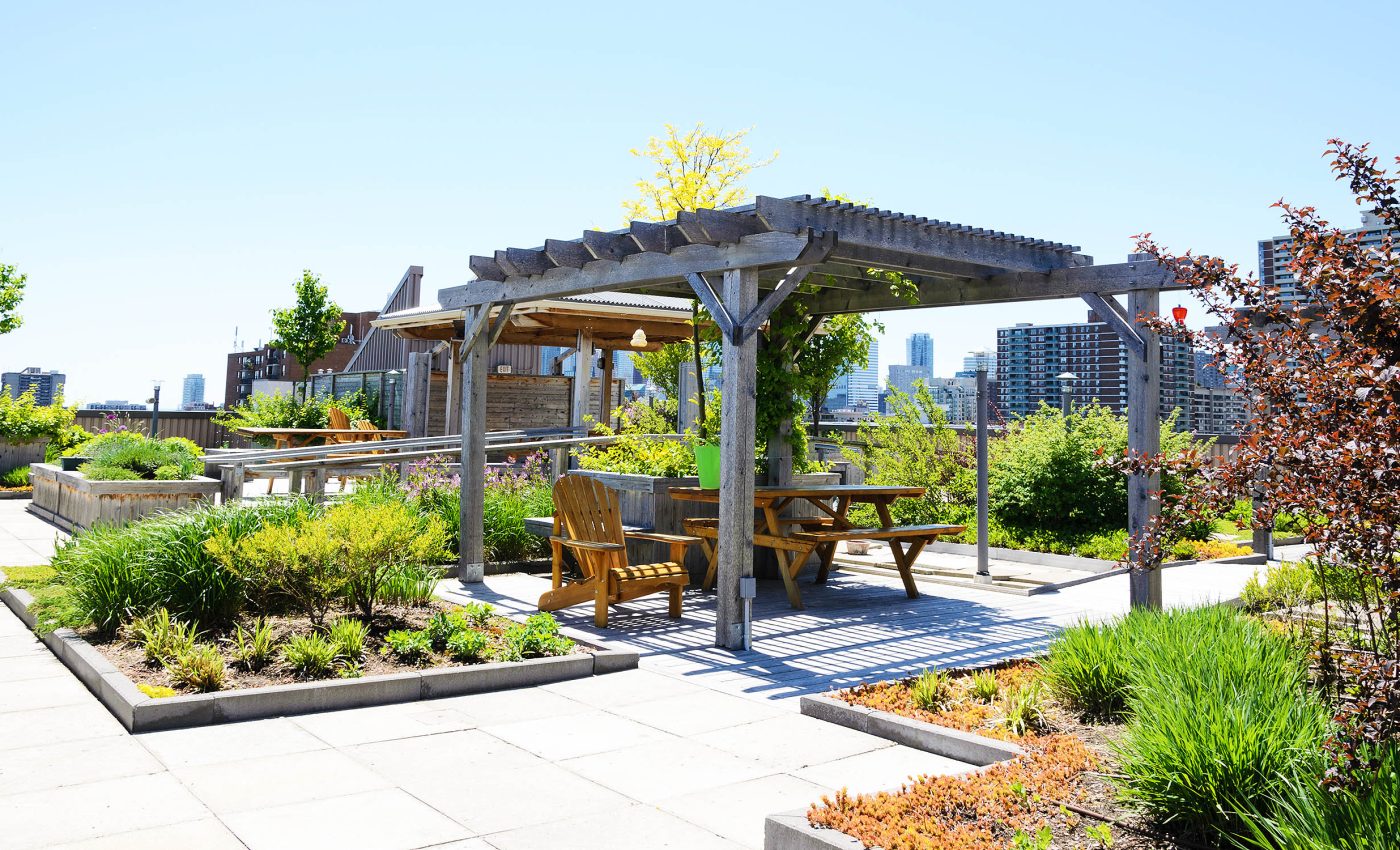
Cool roofs on city buildings are the secret to beating urban heat
When tackling the heat of urban environments, a fresh approach is making waves: cool roofs.
This innovative and low-tech solution could be the key to managing rising city temperatures, as found in a recent study overseen by researchers at University College London.
Roofing solutions vary
The study, which leveraged a cutting-edge, three-dimensional urban climate model of Greater London, investigated the thermal effects of a variety of urban heat management systems.
The models examined included painted cool roofs, green roofs, rooftop solar panels, ground level tree vegetation and air conditioning.
They were simulated to run during the two hottest days of the summer in 2018, which set a record high temperature for the city.
The results were revealing. Widespread implementation of cool roofs had the potential to reduce outdoor temperatures across the entire city by an average of 1.2 degrees C (2.2 degrees F), peaking up to 2 degrees C (3.6 degrees F) in some locales.
Other systems, including extensive street-level vegetation and solar panels, produced a smaller net cooling effect, reducing temperatures by just about 0.3 degrees C (0.54 degrees F) on average throughout the city.
Hidden cost of air conditioning
While air conditioning is a popular and seemingly effective solution, it carries with it a significant drawback.
The process transfers heat from within buildings to the outside, potentially warming the outdoor urban environment by about 0.15 degrees C (0.27 degrees F) for the city as a whole.
In the densely populated center of London, this increase could be as much as 1 degree C (1.8 degrees F).
Winning advantage of cool roofs
Discussing the research findings, Dr. Oscar Brousse, the lead author, emphasized the effectiveness of cool roofs in combating urban heat.
He noted, “We comprehensively tested multiple methods that cities like London could use to adapt to and mitigate warming temperatures, and found that cool roofs were the best way to keep temperatures down during extremely hot summer days.”
Dr. Brousse also mentioned that while other strategies offered various important advantages, they were not as effective in reducing outdoor urban heat as cool roofs.
Clearly, the climate is changing, and urban dwellers are particularly vulnerable.
Cities are notorious for trapping heat, leading to the Urban Heat Island effect that heightens discomfort and can even increase mortality rates during heatwaves.
Adapting to this reality has become a pressing concern for city planners and architects, spurring them to explore options like cool roofs, green roofs, expanded urban vegetation and interior methods like air conditioning.
Every solution has its place
Though cool roofs emerged as the clear overall winner, other methods also have their merits.
For instance, green roofs contribute to water drainage and wildlife habitats, even though their net cooling efficiency was negligible on average.
Similarly, photovoltaic solar panels could theoretically power an extensive distribution of air conditioning units if installed to their maximum extent.
As cities continue to search for solutions to mitigate the impact of rising temperatures, cool roofs appear to be a promising and effective tool to maintain a comfortable, sustainable urban environment.
Investing in cool roof technology
As we move towards broader implementation, the economic and environmental benefits of cool roofs are becoming increasingly evident.
Not only do they reduce urban temperatures, but they also lead to substantial energy savings for building owners. By reflecting more sunlight and absorbing less heat, cool roofs decrease the need for air conditioning, thus lowering electricity bills and reducing greenhouse gas emissions.
Moreover, cool roofs can extend the lifespan of roofing materials by reducing thermal expansion and contraction, which typically degrade conventional roofs over time. This results in lower maintenance costs and less frequent replacements, delivering long-term financial benefits.
Policy makers and urban planners are encouraged to consider incentives for cool roof installations, such as tax breaks or grants. These initiatives could accelerate adoption and amplify the positive impact on urban climates.
Public awareness campaigns can also play a crucial role in educating homeowners and businesses about the advantages of cool roofs, driving community-wide efforts to combat rising city temperatures.
Communities, businesses, and governments can adopt cool roof technology. This collective effort can create cooler urban environments. It also promotes sustainability in cities.
The full study was published in the journal Geophysical Research Letters.
—–
Like what you read? Subscribe to our newsletter for engaging articles, exclusive content, and the latest updates.
Check us out on EarthSnap, a free app brought to you by Eric Ralls and Earth.com.
—–













